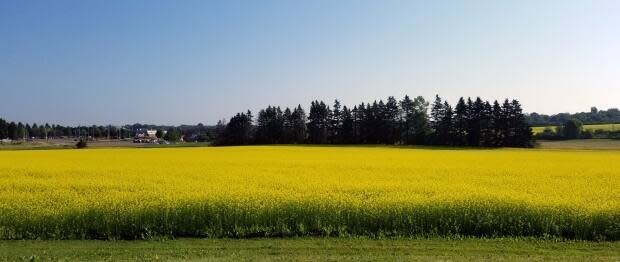P.E.I. research getting at the roots of potato early dying disease
A multi-million dollar research project is being done to study a disease considered to be a major cause of lower potato yields on P.E.I.
Early dying disease kills potato plants in late August and early September — limiting yields by as much as 50 per cent. Farmers will still get some potatoes, which are fine to eat, but they will be fewer and smaller.
The research is part of a $3 million national project, which on the Island includes Agriculture and Agri-food Canada, the P.E.I. Potato Board, the P.E.I. Department of Agriculture, and Cavendish Farms as partners.
The disease is caused by two separate organisms. Root lesion nematodes create pathways for Verticillium fungus to get inside the potato plant.
"That Verticillium fungus grows into the plant, grows in through the internal plumbing of the plant. and it blocks it up, and it prevents the plants from uptaking water," said Ryan Barrett, research coordinator with the P.E.I. Potato Board.
"That basically just gums up the pipes and then they're more likely to wilt and die during summertime."
Early dying is a major problem almost everywhere potatoes are grown, said Barrett.

Persistent pest
Spores from Verticillium can as long as a decade in the soil, Barrett said, so crop rotation — which in some cases can starve a pest of its host — does not help.
Research already done also suggests that red clover, a common rotation crop on the Island used to build nitrogen in the soil, may increase Verticillium in a field. The main focus of this year's research will be a search for rotation crops that Verticillium and nematodes don't like. One candidate is brown mustard.
"When used as a green manure crop that's tilled into the ground, it releases a gas which acts to kill many different bugs in the soil, and Verticillium and nematodes being some of those," said Barrett.
Brown mustard is already being used as a rotation crop on P.E.I. in the fight against wireworm.
Researchers are also looking at what levels of Verticillium and nematodes potatoes can tolerate.
"Just because you have them doesn't mean it's necessarily a problem," said Barrett.
"Next year we're taking a group of the best fields, like the field that had the least amount of verticillium and nematodes, and then a group of fields that had the highest amount, and then we're following those through the potato crop, because we're really trying to understand what are the thresholds for this."
The goal will be to devise a test for farmers to determine if action against the pests is required.
More from CBC P.E.I.

